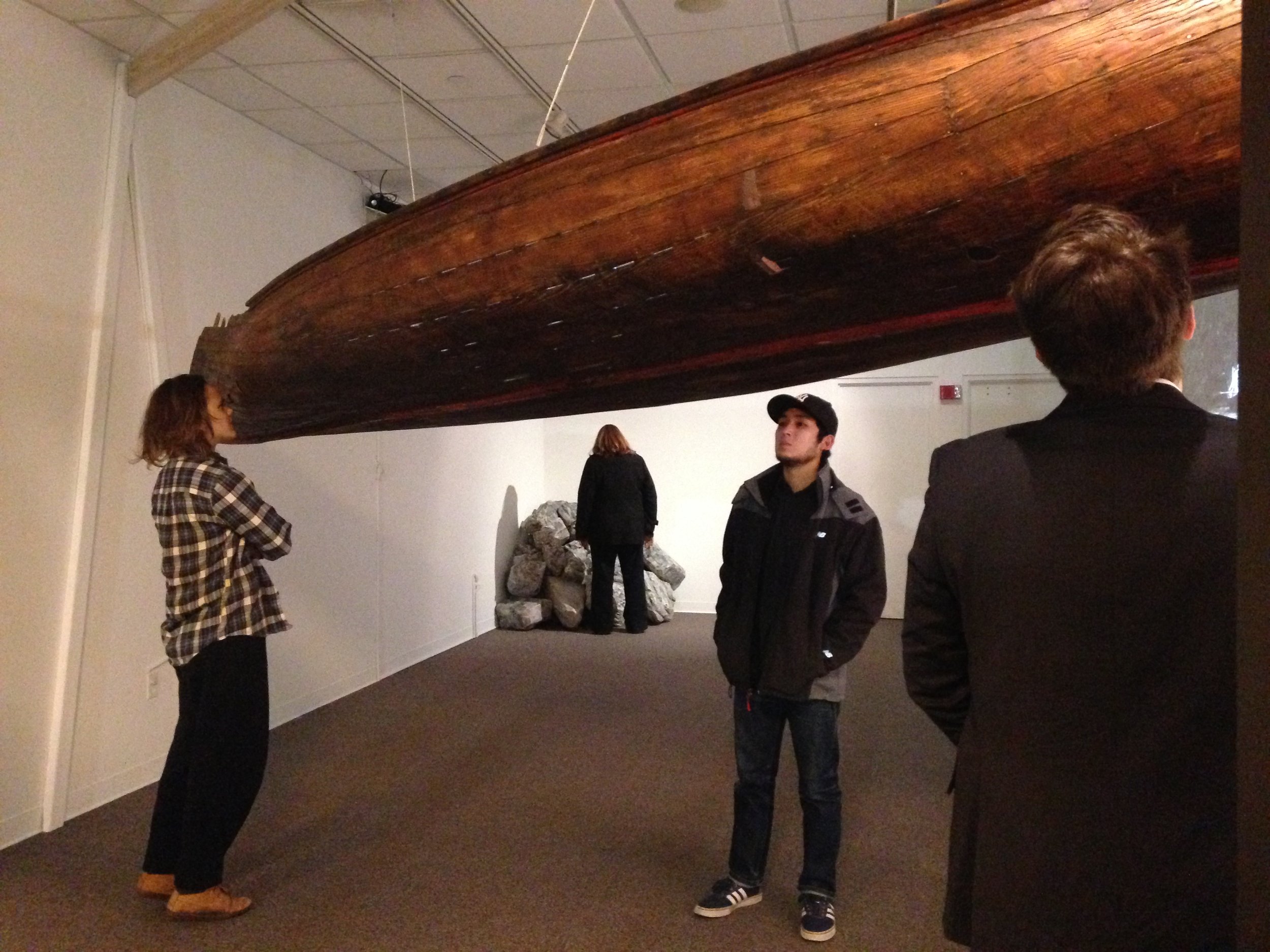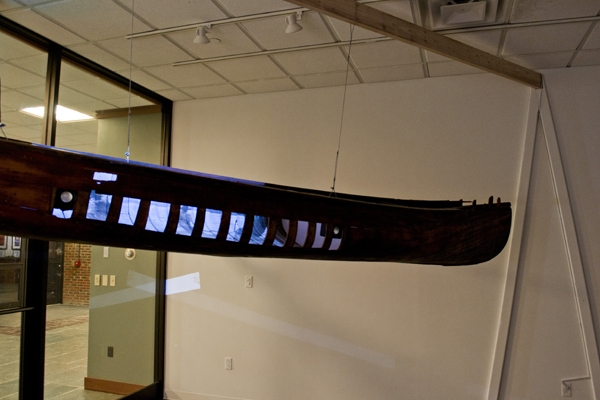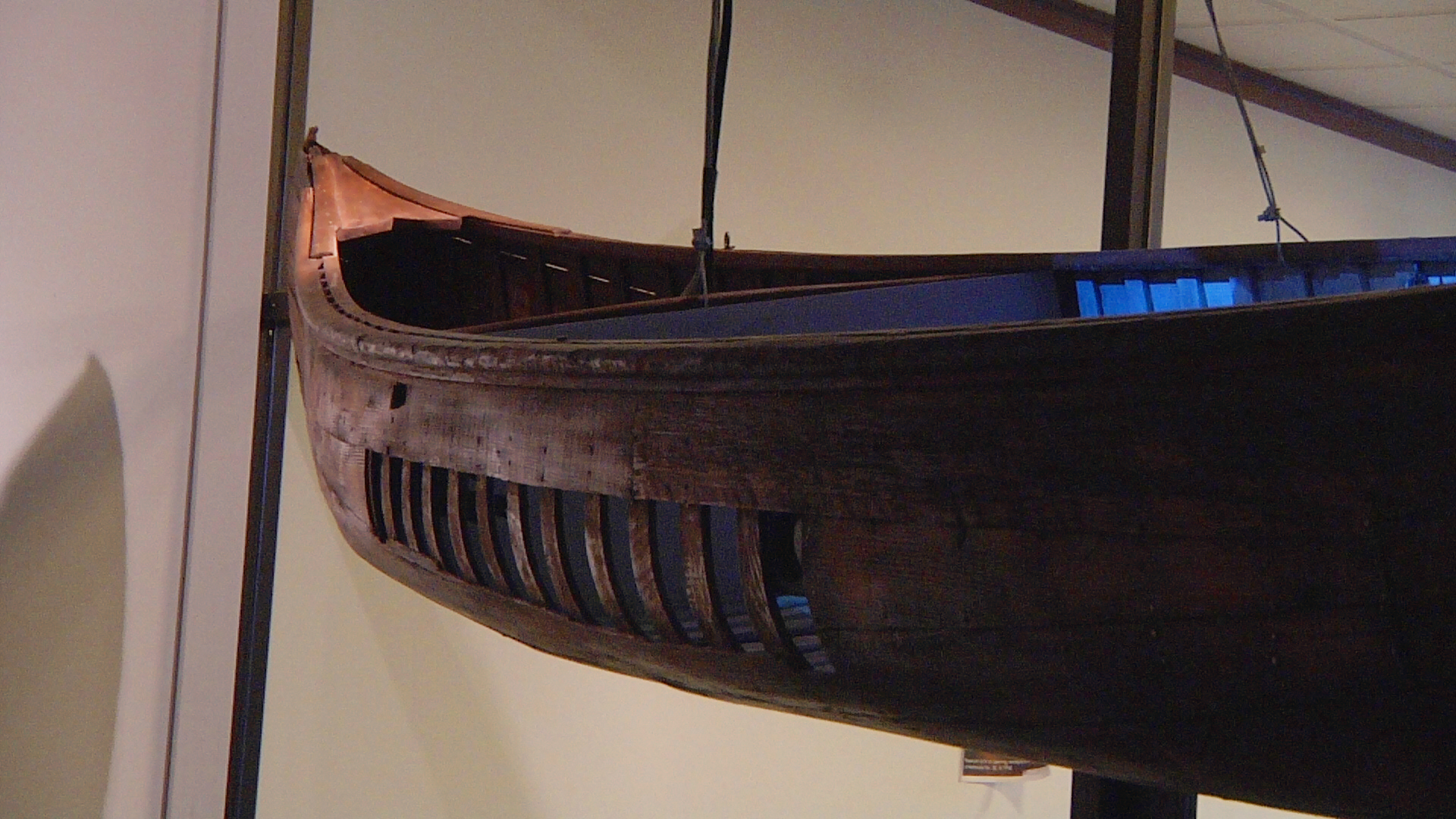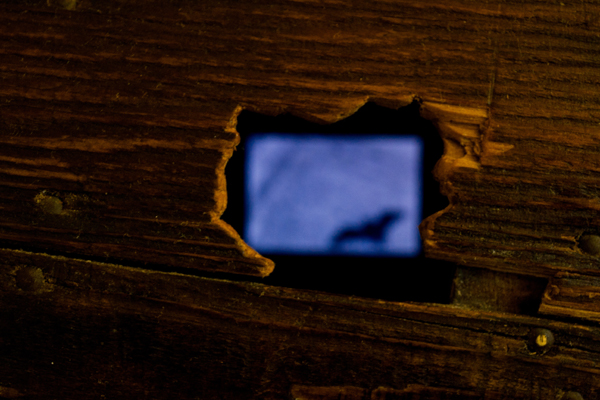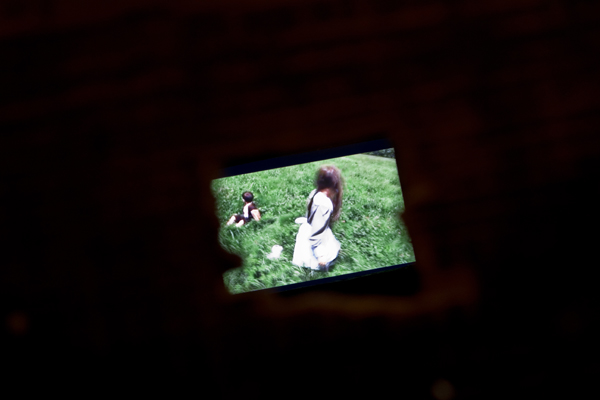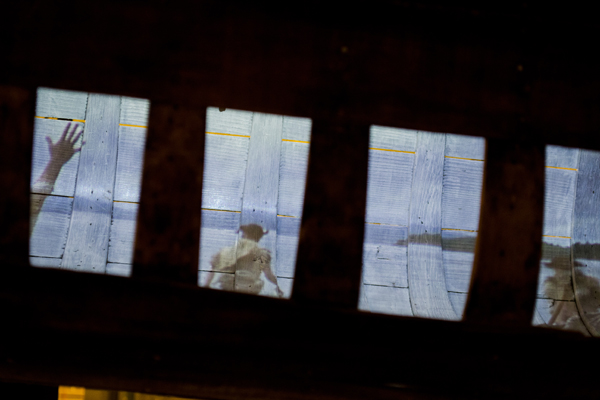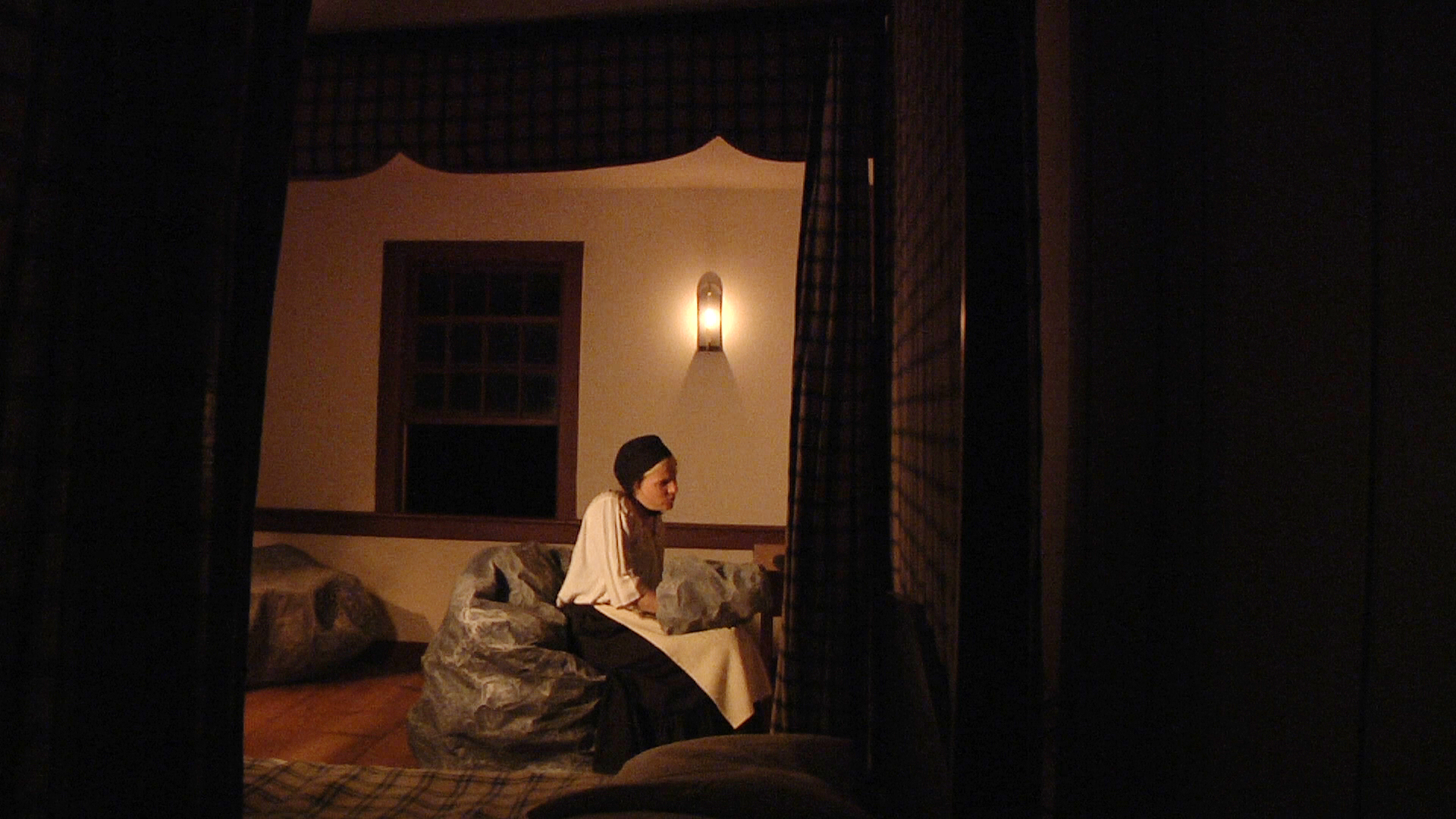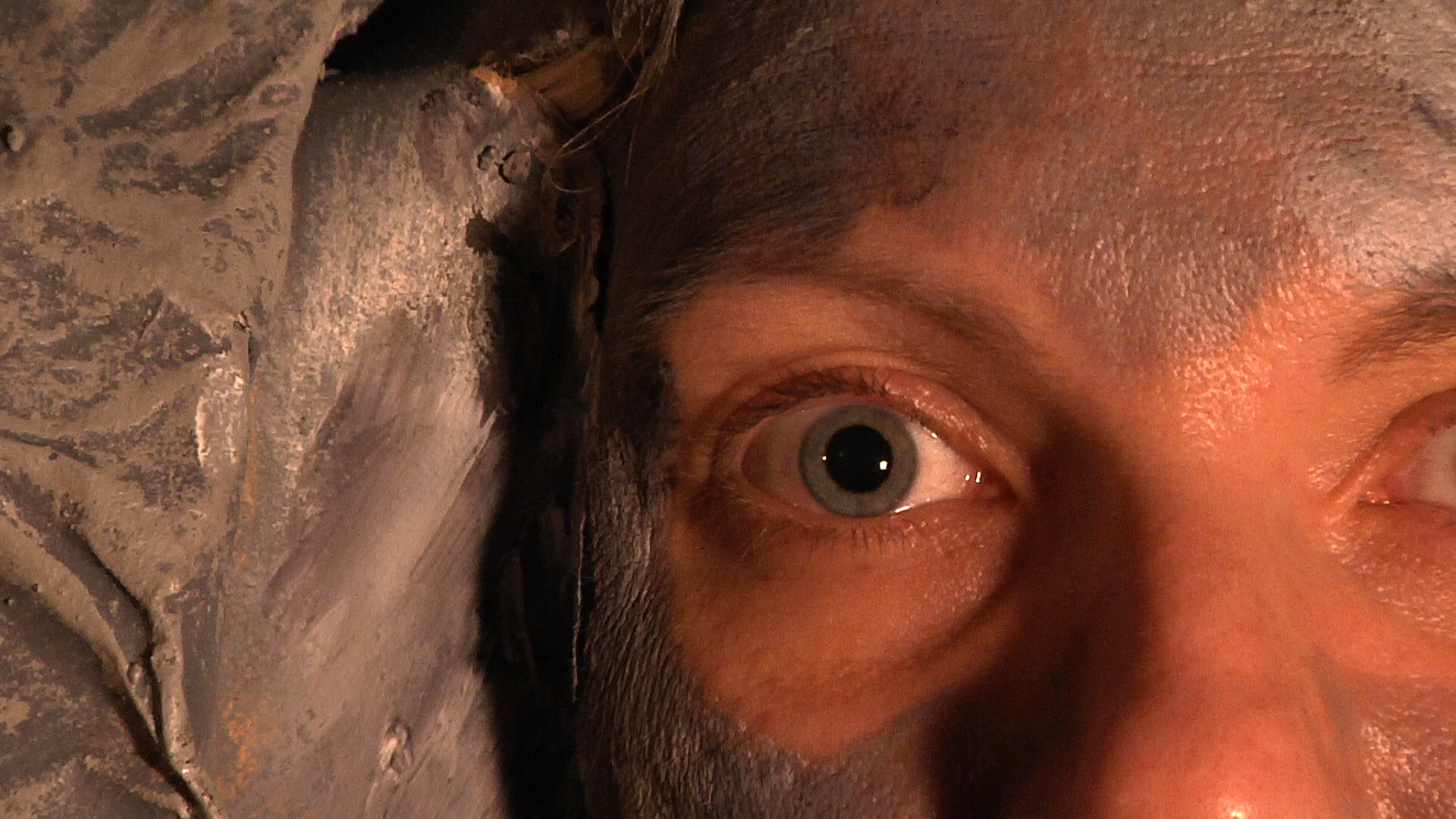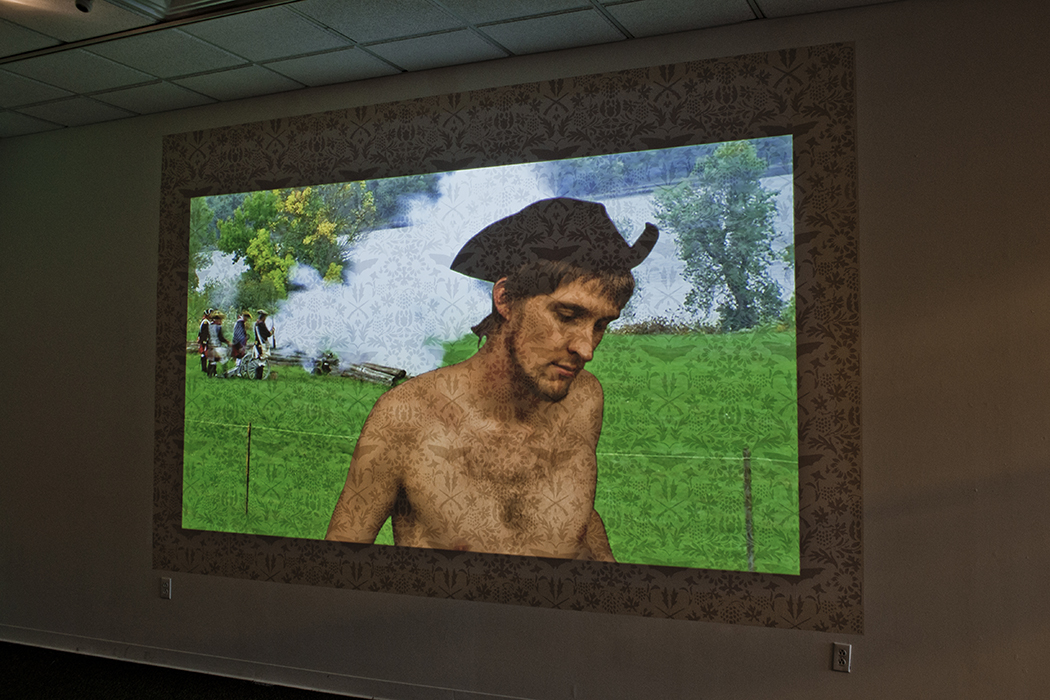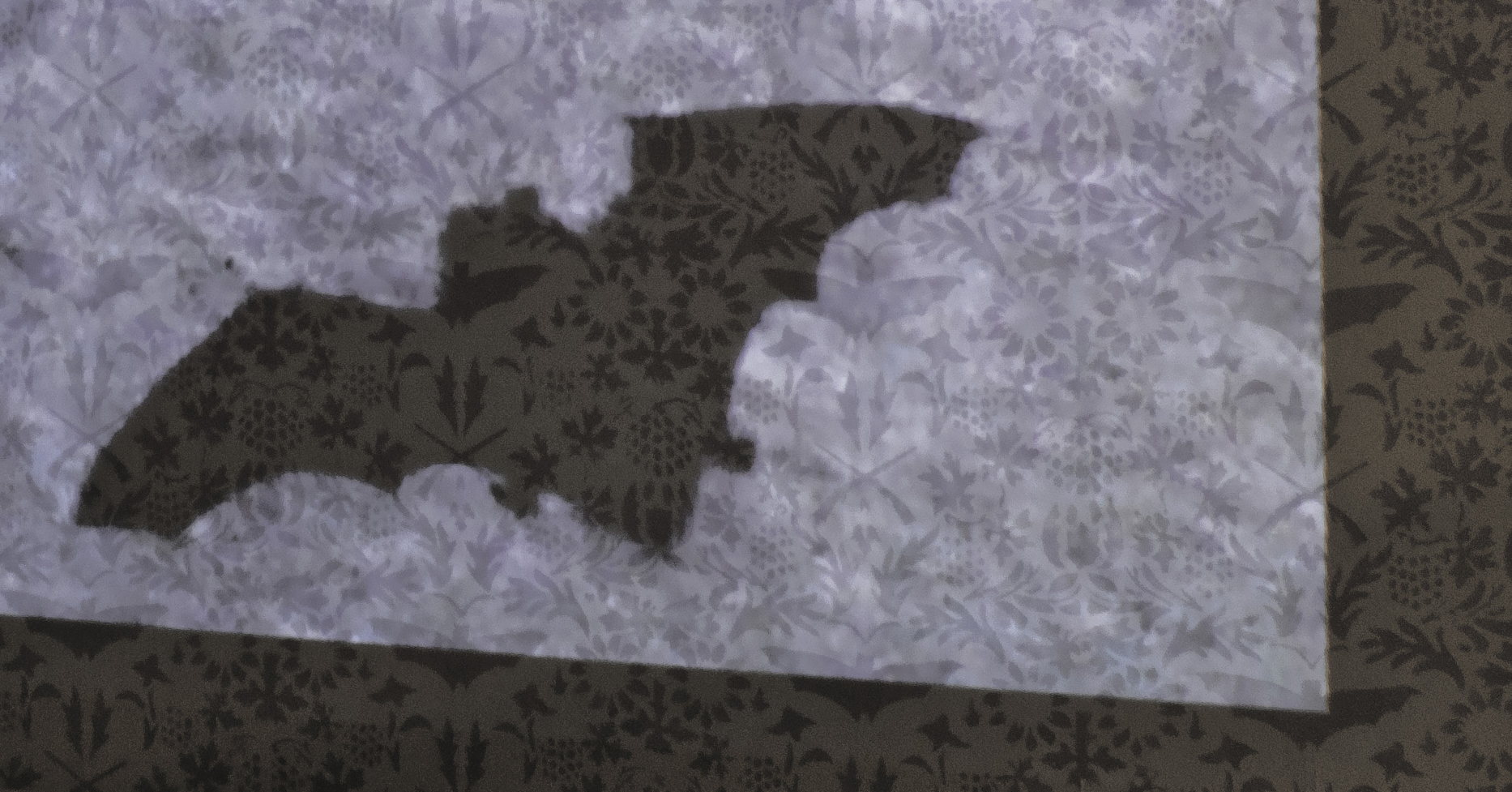Ethan Allen Nights / multi-media video installation, 2010-2013 with C. Wright Cronin
In 2010 C. Wright Cronin wrote a script for a play that would become the basis for the multi-media installation Ethan Allen Nights. The surrealist and psychoanalytic narrative is set on the eve of the storming of Fort Ticonderoga and is based on the historical and wildy fantastical writings of Revolutionary War hero Ethan Allen. In the script, Ethan Allen and his abandoned wife Mary write hate letters to each other, descending into parallel but divergent states of psychosis. The Green Mountain Boys, the mythic guerilla militia, fantasize about slitting the throats of the British.
The script was turned into a “deconstructed film”; each scene embedded in a three-dimensional sculpture utilizing themes and props from the film. The deconstructed and surrealist nature of the installation mirrors the complex layering of truth and fiction in the film, calling into question the authenticity of history, personality, and love. The installation has been broken into three parts below:
The canoe
Suspended from the ceiling a 12-foot wooden canoe houses three scenes. In the first (projected onto the interior of the canoe), Ethan and the Green Mountain Boys prepare to paddle the canoe across Lake Champlain to surprise the guards at Fort Ticonderoga. The reverse side of the canoe reveals two small peepholes, each with a tiny monitor embedded within. One shows a scene of Ethan and Mary as children, playing and reciting poetry. The other a scene of Ethan’s hallucination that combines actual historical reenactment footage with images of Mary and the Green Mountain Boys becoming animals and dancing around him. This scene also introduces the symbol of the bat within the film, a visual signifier of the shift between factual and fictitious spaces within the narrative.
One of the main themes in this work is reenactment and repetition, not purely from an historical perspective, but using the historical context of the installation to elucidate the ways in which we are all enacting reenactment. Ethan’s fantasy reveals a kind of violence inherent in his ego-maniacal self-revelation, but also its power and creativity. His fantasy reflects a certain phase of youthfulness, its obsessions, its destructiveness, and its eventual degeneration. There is something both attractive and disturbing about Ethan’s psychosis/genius/creativity, the hallucinogenic space in the film, his grandiose visions of violence, and his self-proclaimed role as a prophet of Yahweh. Perhaps this also aligns well with ideas about film in general; it is both a place of phantasmagoria and ideology. There is a uselessness in his fantasy- the violence is only justified in his own mind and within the constructs of the film.
The Rocks
A mound of rocks are piled into a corner and in the middle, a medium sized monitor plays a loop of Mary’s monologues—in each she becomes more and more inundated with these rocks, eventually becoming one of them.
There is an opposition between Ethan and Mary, between his outwardly violent fantasy on the one hand, and her inwardly violent reaction. In the film, Mary has been abandoned and left inside the house and through her grief and her anger she slowly begins to give herself over to numbness, to object-ness. Mary becomes in touch with a more physical reality, represented by her attachment to material things, and her eventual transubstantiation into the most concrete of objects, a rock. Yet, there is a sense that she is doing this willingly. So she is detaching, going inside, becoming this material. There is something in this aspect of the materialism, of becoming one with, or having the body merge with the material, that is freeing for her. She recedes into her own emptiness. This is a strange promise of liberation: she says, “It feels so safe to pretend that only things exist...A compete lack of meaning...I find it freeing.” In different ways then, Ethan and Mary both reveal the ways in which we “become stones, historically and literally,” growing into our own versions of ourselves through repetition
Wallpaper
Utilizing symbols from the film (the bat, and the crossed muskets symbol of American soldiers) a stencil was made mimicking old-fashioned wall paper and applied directly to the wall. Over this pastiche is projected video of the Green Mountain Boys fantasizing about slitting the throats of the British. These scenes combine film of the actors with historical reenactment footage.
The contradiction here is that, in a way the reenactment gets at something real that irrupts from behind its flat façade (like the flatness of the wallpapered wall, layers of background, and figures superimposed in top). By highlighting the hyperreal, symbolic nature of the larger narrative I am trying to point at something else behind it, the intrusive, traumatic, perpetual part of the self.
In each of these scenes there is a sense of performativity that belies my own uneasiness with historical narratives, personal narratives, and structures of identity as they are captured through film. Or in other words, I’m making these narrative structures obvious in order to reveal their constructed and limited nature. The actors were reenacting something that had no factual basis in history, and yet by presenting it as a reenactment there is an implication that it is truthful. There is a semblance of affect, (Ethan’s monologues, or the children’s speech) as if this is all just a play of unconscious drives, or a dream. Whatever the drive to re-inscribe seems simultaneously related to the repetition compulsion and the death drive. Without an end in sight, without a final signifier to assign meaning retroactively, there is only an experience of a problem that can be solved though ever more repetitions. The reenacting becomes its own game, reliving for the sake of itself in an endless feedback loop (the loops of video and the sound loops layering over eachother) and I wonder about what is revealed about ourselves (the audience’s experience) from within these loops, from within that space of repetition.
Directed and Edited by Rebecca Weisman
Written and Co-directed by C. Wright Cronin
Camera Operator: Victoria Kereszi
Sound: Dan Mazur and Rebecca Weisman
Lighting: Brad “Bear” Ingalls
Props: Dana Heffern and Allison Roach
Actors: Hezzie Johanson, Jim Clark, John Johanson, Tyler Sinclair, Wright Cronin, Miette and Paxton Drury
